Use of resistant cultivars is one of the main strategies available for managing plant-parasitic nematodes. In cotton and peanut, there have been new releases of resistant cultivars in recent years. Preliminary results and observations from ongoing UF/IFAS research to verify the efficacy of these cultivars will be shared in this article.
Before describing these cultivars, a little background on nematode resistance is necessary. First, cultivar resistance typically only works against a particular species or genera of nematode. For example, a peanut cultivar resistant to peanut root-knot nematode does not impede sting nematode infection. Second, the level of resistance varies. Resistance may be very high—completely preventing nematode infection and reproduction—or more moderate, allowing some reproduction. Verifying the level of resistance that a particular cultivar has is one applied research target. Another target is testing yield response of resistant cultivars. The intention of resistant cultivars is to reduce nematode infection and damage, increasing yield. In practice, if the resistant cultivar has low agronomic yield potential and/or the level of resistance is moderate, a susceptible cultivar may outyield the resistant cultivar, particularly under low or moderate nematode pressure. These are some of the areas we are looking into in research on resistant cultivars in (1) cotton, (2) runner peanut, and (3) virginia peanut.
–
Cotton cultivars with stacked resistance to reniform and southern root-knot nematodes
The release of cotton cultivars with stacked resistance to both reniform and southern root-knot nematode in 2021 was a big development, as they are the major nematodes in cotton. Whereas resistance to southern root-knot nematode has been available, previously there had been no viable cotton cultivars with resistance to reniform nematode. Deltapine 2141NR, Phytogen 443, and Phytogen 411 are the three cultivars with stacked nematode resistance available for the Florida Panhandle. Preliminary UF/IFAS research last year suggested DP2141NR and PHY443 are effective at reducing reniform nematode infection with PHY411 not yet tested. Yield responses were variable by cultivar and further sites and additional years were needed to make conclusions. All three cultivars are being testing in various trials under heavy reniform nematode pressure this year. Similar to last year, the resistant cultivars have more vigorous vegetative growth than susceptible cultivars (Figure 1, 2, and 3). If preliminary research results hold, cotton cultivars with stacked nematode resistance will be a useful new tool for growers, especially as a new option for managing reniform nematode.
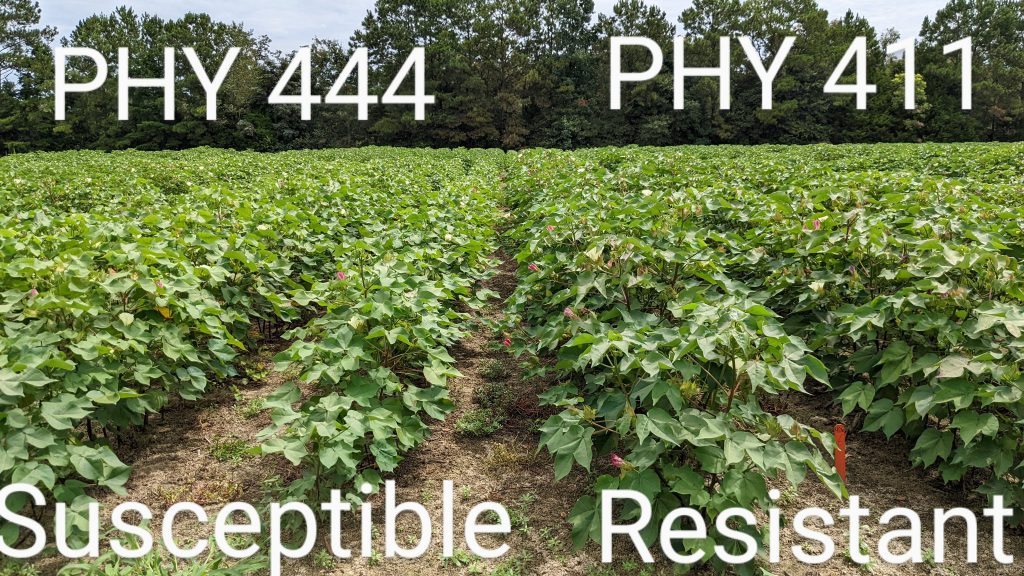
Figure 1. Canopy height and size is greater for reniform nematode resistant Phytogen 411 than susceptible Phytogen 444. From July 2022 at 75 days after planting in small plot cotton trial at NFREC-Quincy under high reniform nematode pressure. Credit: Zane Grabau, UF/IFAS
–
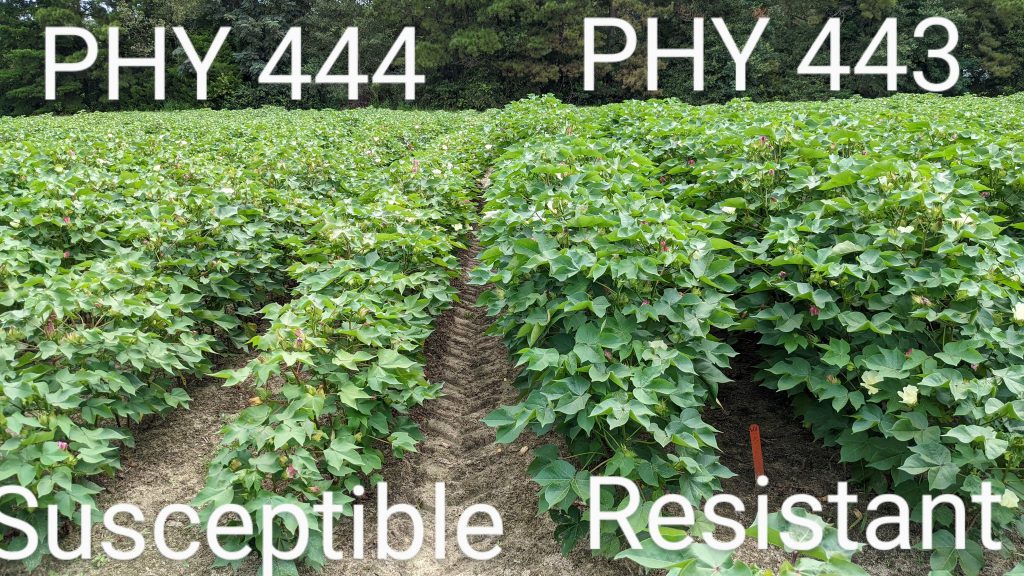
Figure 2. Canopy height and size is greater for reniform nematode resistant Phytogen 443 than susceptible Phytogen 444. From July 2022 at 75 days after planting in small plot cotton trial at NFREC-Quincy under high reniform nematode pressure. Credit: Zane Grabau, UF/IFAS
–
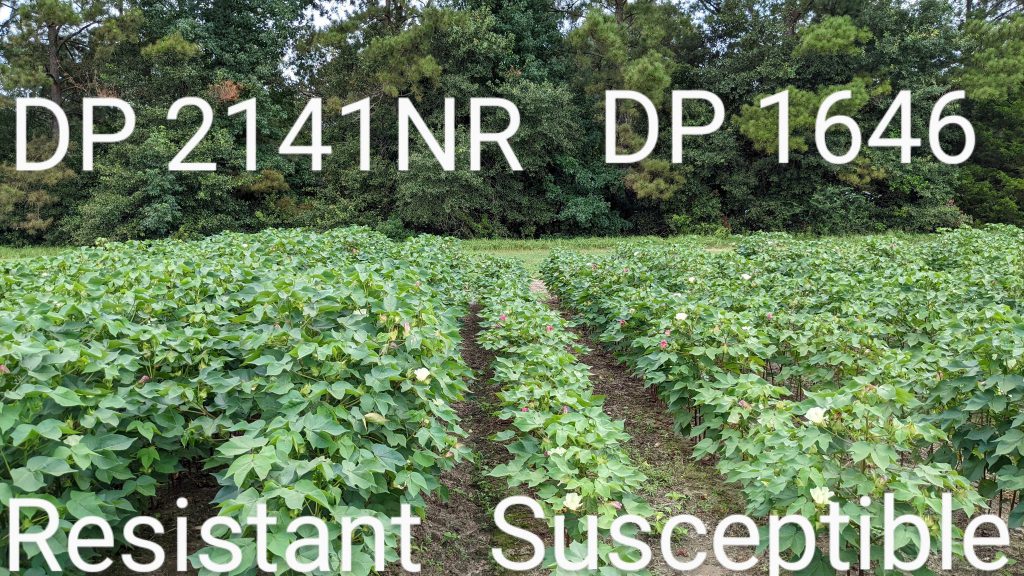
Figure 3. Canopy height and size is greater for reniform nematode resistant Deltapine 2141NR than susceptible Deltapine 1646. From July 2022 at 75 days after planting in small plot cotton trial at NFREC-Quincy under high reniform nematode pressure. Credit: Zane Grabau, UF/IFAS
–
Runner peanut cultivars resistant to peanut root-knot nematode
In peanut, resistance to peanut root-knot nematode (the major nematode pest in peanut) has been available since the release of Tifguard in 2008. However, variable yield potential, seed purity issues, and other factors limited the market for that cultivar. Since then, two high oleic cultivars, TifNV High O/L and Georgia 14N that share a nematode-resistant background with Tifguard, have been released. In particular, TifNV looks to be the market choice for a resistant cultivar as it has more reliable yield potential than prior resistant cultivars. TifNV has a very high level of root-knot nematode resistance and holds yield well under high nematode pressure. In research trials over the past two years, we have been comparing TifNV performance relative to a susceptible cultivar (Georgia 06G) with conventional nematicides and look forward to reporting those results this fall. Figures 4 and 5 illustrate that resistant TifNV has greater canopy coverage than susceptible Georgia 06G in small plot field trials at Live Oak and Citra this year.
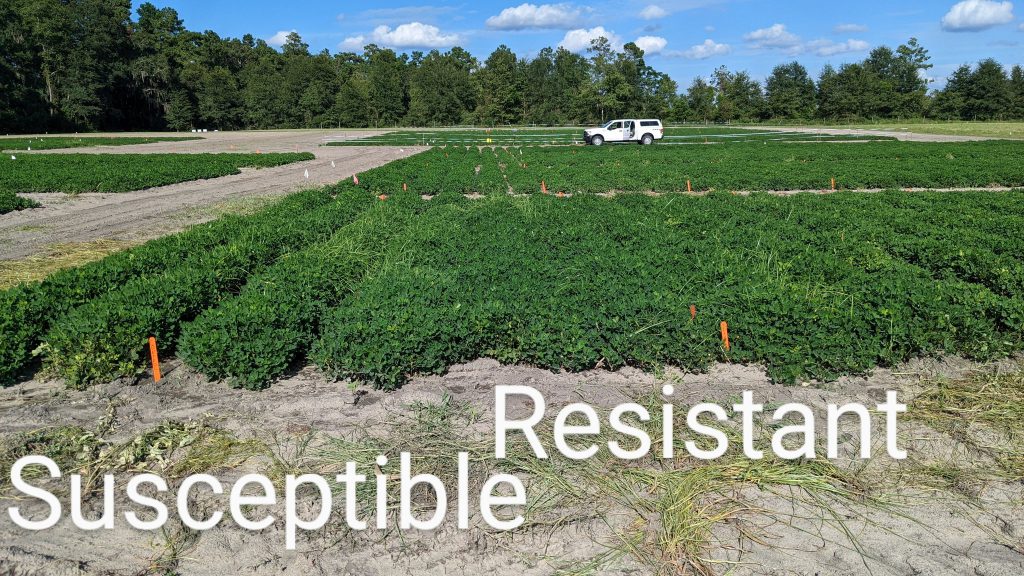
Figure 4. Canopy coverage is greater for root-knot nematode resistant TifNV High O/L than susceptible Georgia 06G in 2022 small plot trial at NFREC-SV. Trial is under high pressure from peanut root-knot nematode and image is from 99 days after planting. Credit: Zane Grabau, UF/IFAS
–
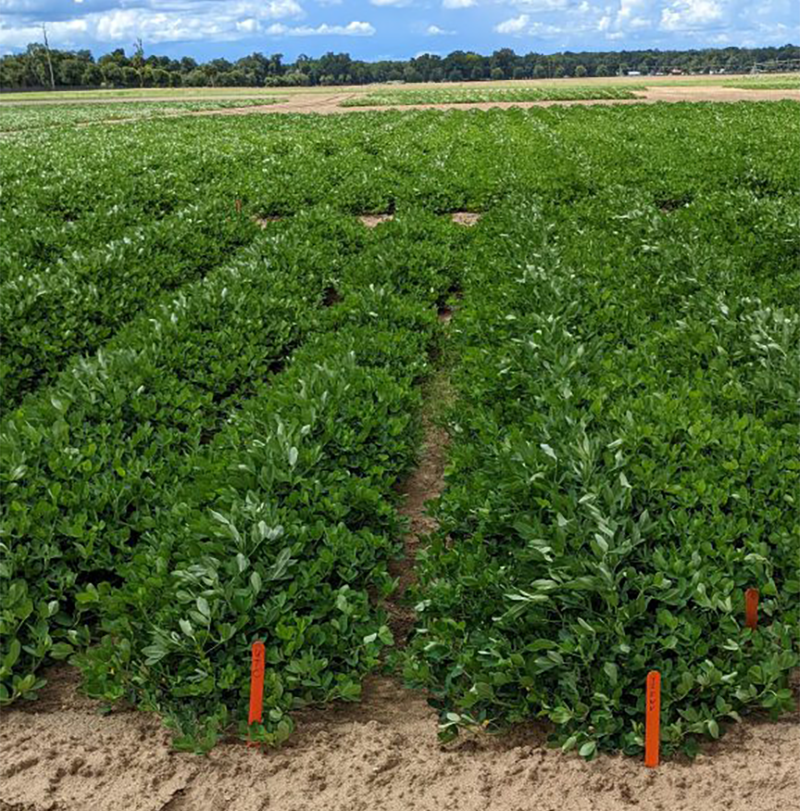
Figure 5. Canopy coverage is greater for root-knot nematode resistant TifNV High O/L (right) than susceptible Georgia 06G (left) in 2022 small plot trial at PSREU near Citra, FL. Trial is under high pressure from peanut root-knot nematode and image is from 74 days after planting. Credit: Zane Grabau, UF/IFAS
–
Virginia peanut cultivars resistant to peanut root-knot nematode
Recently, the resistance genetics in runner peanut have been introduced to Virginia peanut, culminating in the release of Georgia 19HP and TifJumbo. Due to some interaction with local Virginia peanut growers and Georgia peanut breeders, we initiated a small plot trial at Citra this year to test these resistant cultivars, along with a typical susceptible cultivar, Bailey II, with and without Velum nematicide. That trial is ongoing, but preliminary results have shown interesting results. Either the resistant cultivars or nematicide reduced nematode infection at midseason relative to the susceptible without nematicide (Figure 6). Despite this, canopy growth has been more vigorous with Bailey II than the resistant cultivars (Figure 7). This is likely due primarily to agronomic traits as Bailey II tends to have vigorous vine growth, such that growers have requested cultivars with less vine growth, so they are easier to harvest.
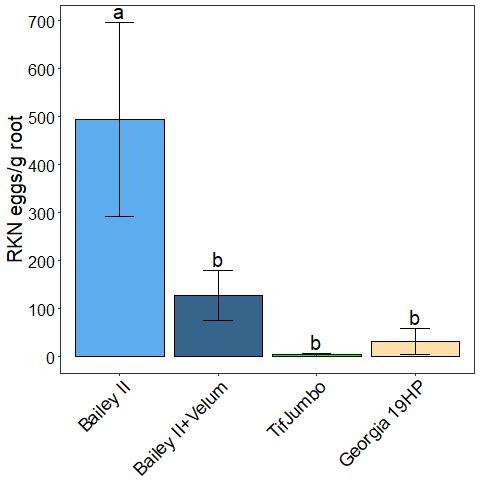
Figure 6. Root-knot nematode infection in peanut roots at 42 days after planting in small plot trial at PSREU near Citra, FL. Letters indicate that nematode populations were significantly greater (Fisher’s LSD, P<0.05) for Bailey II than other treatments. Bailey II is root-knot nematode susceptible, whereas the other two cultivars are resistant.
–
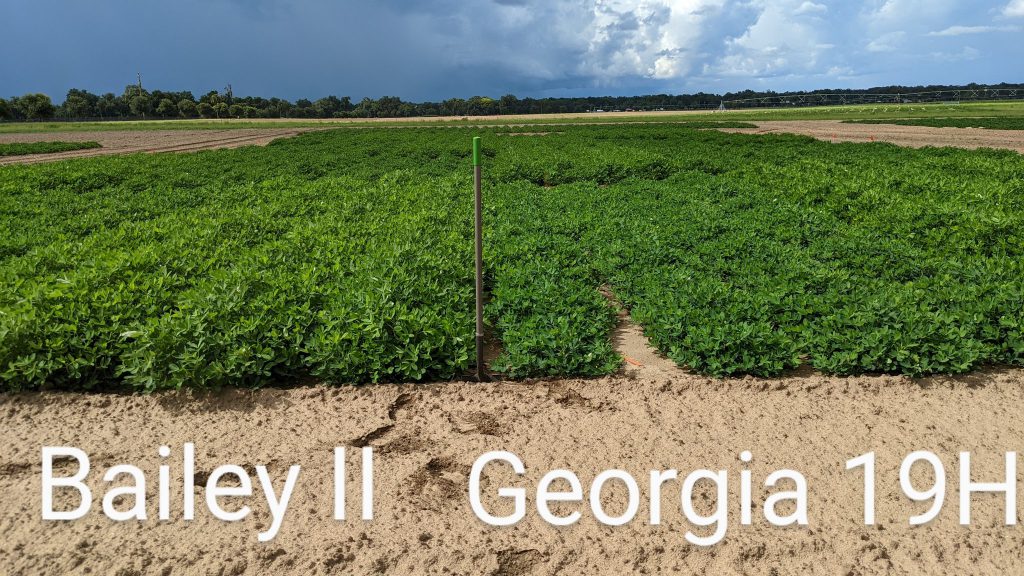
Figure 7. Canopy size is greater for root-knot nematode susceptible Bailey II than resistant Georgia 19HP in small plot research trials at PSREU near Citra, FL. Trial is under severe peanut root-knot nematode pressure and image was taken 74 days after planting. Credit: Zane Grabau, UF/IFAS
–
As mentioned above, testing of all of these resistant cultivars is ongoing and we look forward to sharing more results in the upcoming months. As the 2022 growing season begins to wind down, consider nematode-resistant cultivars as part of your nematode management strategy in cotton and peanut for 2023.
–
For more information on nematode management in peanut and cotton, see the following UF/IFAS publications:
Management of Plant-Parasitic Nematodes in Florida Cotton Production
Management of Plant-Parasitic Nematodes in Florida Peanut Production
- Salibro: A Recently-Registered Conventional Nematicide for Select Horticulture Crops - March 7, 2025
- What Cotton Cultivars have Resistance or Tolerance to Southern Root-knot and Reniform Nematode? - February 28, 2025
- How Well Do Root-Knot Nematode Resistant Peanut Cultivars Perform in Florida? - February 14, 2025
